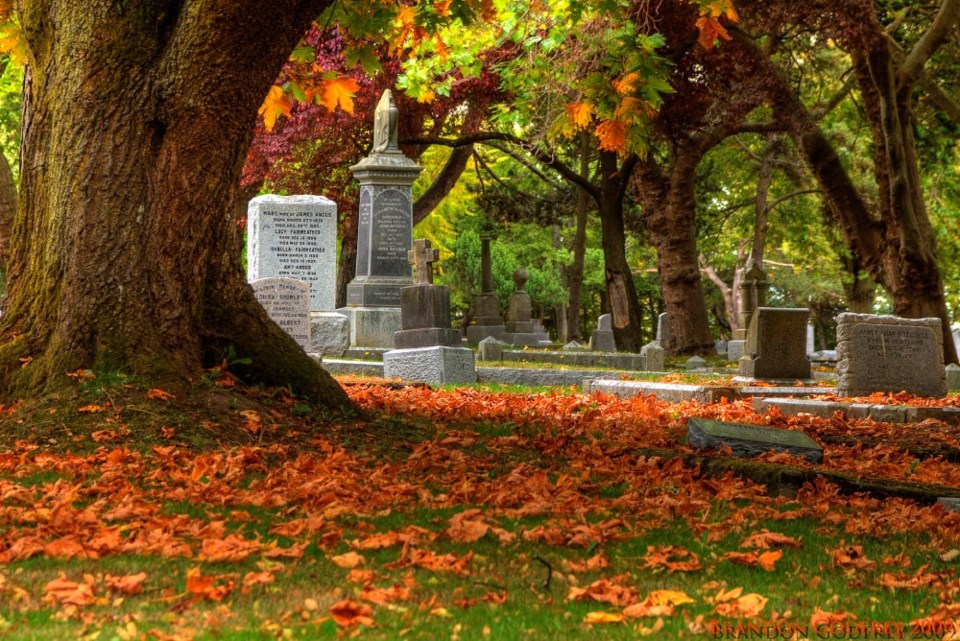What happens to our loved ones when they die? What happens for the living? Perhaps more pressing are questions about how we live in this world: do we treat each other and the earth with care? But the dead also demand attention with the jarring realities of their dying—and intimations of our own death.
Whether death comes after a long illness or suddenly, sometimes horrifically, our life as we know it also dies. We search for ways to accept these deaths as real. We must bury the physical bodies and take spiritual leave of the dead.
Prayers, ceremonies and quiet vigils can lighten the piercing loneliness and bewildering uncertainty surrounding the death of a beloved. There are public memorials to build and private shrines to tend. We perform rituals, scattering ashes, lighting candles, placing food on graves. Condolence messages are reread; favourite haunts revisited. Mostly, we mourn in our own ways while still meeting demands of the living—feeding children and paying taxes.
The dead leave us, and we leave the dead. Yet they still live, in new ways.
A deep relationship that has changed us in life continues to shape us profoundly in death. Love does not end with death. Gestures, stories, words of wisdom live on, as do hurts and regrets. Unfinished activities tug at us. Vivid dreams, comforting visitations, and unsettling ghostly encounters can feel real, even as we hold vague, contradictory beliefs about the afterlife. Polish poet Wistawa Symborska writes of the Soul: “Joy and sorrow//aren’t two different feelings for it.// It attends us// only when the two are joined.
The dead become spirit members of our communities—to be visited and remembered, sometimes with honour and love. If we are seniors or survivors of large disasters, we can neither avoid the many dying and dead, nor ignore the fears, relief or even gratitude of those remaining. Lives cut short in wars, on the streets or in hospital wards leave the living with deep sorrows for the untimely deaths and obligations to unlived years. Drastic extinctions of plants and animals cry out for action. Sometimes the bereaved organize monumental memorials or silent vigils to remember communal tragedies. Or long campaigns are launched: to redress injustices, save old-growth forest, or create an international culture of peace.
Time may release the living from the dead while communal gatherings of mourning and celebration keep connections alive and sacred. On November 2, All Souls Day, Catholic masses and prayers are said to light the path of souls to heaven. Veterans of war and peace missions are honoured on November 11 . Quakers hold annual Memorial Meetings giving thanks in writing, silence and speech for the lives of members who died that year. In Jewish Yizkor Services the deceased are remembered in prayers . The Japanese Buddhist Obon Festival of the Dead welcomes ancestor spirits with lanterns, food, dancing and the cleaning of graves. Colourful skeleton costumes are created for Mexican Day of the Dead festivals when spirits of deceased children and adults are guests of honour.
In “Life After Death”, poet Laura Gilpin writes:
The things I know:
how the living go on living
and how the dead go on living with themSo that in a forest
even a dead tree casts a shadow
and the leaves fall one by one
and the branches break in the wind
and the bark peels off slowly
and the trunk cracks
and the rain seeps in through the cracks
and the trunk falls to the ground
and the moss covers itand in the spring the rabbits find it
and build their nest inside
and have their young
and their young will live safely
inside the dead treeSo that nothing is wasted in nature
or in love.
Our lives can be enriched by being open to ways the dead continue to give life. There are new meanings to make.
Marjory Reitsma-Street is a member of the 91原创 Island Religious Society of Friends, (Quakers), viquakers.ca. With appreciations to friend Arlene Wells for her editing help
You can read more articles on our interfaith blog, Spiritually Speaking, at /blogs/spiritually-speaking
*This article was published in the print edition of the Times 91原创 on Saturday, November 2nd 2024



